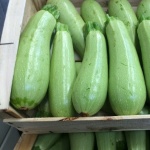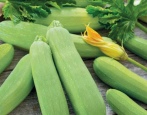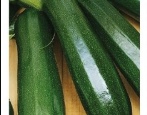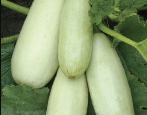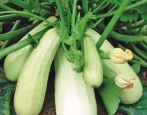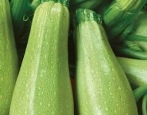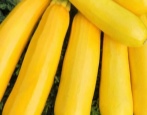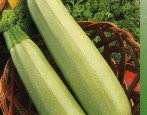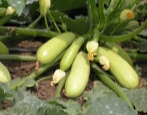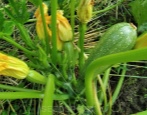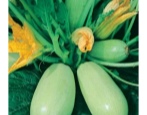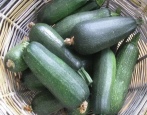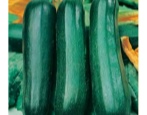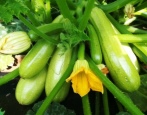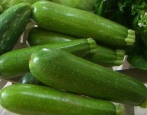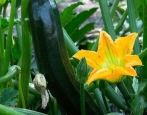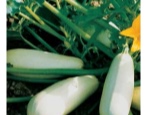
- Year of approval: 2002
- Ripening terms: early maturing
- The period from germination to harvest: 40-42 days
- Description of the plant: with short internodes
- Leaves: small to medium-sized, dark green, strongly split, with mottling
- Fruit shape: cylindrical
- Fruit color: whitish with diffuse mottling
- Color of the pulp: white or light green
- Pulp (consistency): tender, juicy
- Fruit weight, kg: 0,32
Zucchini are distinguished by their unpretentiousness and ease of care. They tolerate mild drought and light frosts well. The Cavili variety is one of the most popular among summer residents due to its excellent characteristics and excellent external data.
Breeding history
Zucchini Cavili is a hybrid selection bred in Holland. The originator was the breeding company Nunhems. The culture came to the territory of Russia in the late 2000s, and in 2002, after passing all the tests, it was entered into the State Register and approved for use.
Description of the variety
The Cavili variety is suitable for outdoor and indoor cultivation. The culture belongs to the group of parthenocarpic plants. This means that the flowers of the plant are bisexual and self-pollinated. This feature is a great advantage, because the zucchini begins to form ovaries very early, before all insects begin their active work.
Early maturity is noted among the positive aspects. Zucchini bushes are formed very small, so they do not take up much space in the garden. The crop yield is high, since the variety has long-term fruiting.
Summer residents note that zucchini has good immunity to a number of fungal diseases. With proper adherence to agrotechnical standards, the variety will be resistant to pest attacks.
According to many gardeners, one big disadvantage of the Kavili variety is that the culture cannot be cultivated on its own, since the seeds are of a hybrid type, and they are empty inside. Therefore, subsequent cultivation from them is impossible.
Characteristics of the appearance of plants and fruits
By the type of plant, the variety belongs to bush groups. The internodes are short. Bushes are small, compact in size. The root system is located close to the surface of the ground, while taking up a lot of space, even more than the top of the bush. This must be remembered when choosing a seating scheme.
Leaves are dark green, small to medium in size. Whitish mottling is present on the surface, and the edges are heavily dissected. And also the leaf plate has a prickly pubescence.
The sepal is small, with thorns. The buds are elongated and orange in color. Flowers are large in size and after a day they completely fade.
The fruits are medium-sized, cylindrical in shape. Approximately 16-22 cm long. The average weight of one fruit is 250-320 grams. But sometimes larger fruits, weighing up to 450-500 g, also ripen. This usually happens if there are only 1-2 zucchini on the bushes.
The peel is thin, whitish, with a diffuse green spot. The surface is smooth, without any dents or ribs.
The pulp is white or light green, very tender and juicy in texture.
An average number of seeds is formed inside. They are elliptical in shape and white.
Purpose and taste
The Kavili zucchini has a universal purpose. Therefore, it can be used to prepare first and second courses. During heat treatment, the pulp does not boil over and does not turn into porridge. And also the fruits are canned, frozen and used for the preparation of caviar.
Zucchini tastes great. It is noted that the fruits are rich in vitamins of the most essential groups.The pulp also contains minerals and biotins.
Ripening terms
Zucchini Kavili belongs to the early maturing varieties, it is also called the ultra-early culture. It takes only 40-42 days from germination to harvest. Ripening is amicable, and fruiting is extended.
Yield
Summer residents note high yields, especially if you take proper care of the crop. On open beds, you can remove an average of 4.6 kg of zucchini from 1 m2, and in greenhouses or covered greenhouses - up to 7-9 kg from 1 m2.
Growing regions
According to the originators, zucchini can be grown on any soil and in any region. But most often the best indicators are recorded in the following regions:
TsCHO;
Central;
Middle Volga;
Nizhnevolzhsky;
Ural;
Northwestern;
West Siberian;
Far Eastern.
Growing and caring
Cavili zucchini can be grown in two ways. But all the terms of subsequent work will directly depend on this.
In warm regions with a pleasant and mild climate, where the ground warms up quite quickly after cold weather, you can sow seeds in pre-treated soil. Such work should be carried out in early May, provided that the soil temperature warms up to + 15 ° C.
The seeds can be germinated a little beforehand. Germination should start in late April or early May. After the seedlings have 2-4 strong leaves, the seedling can be transplanted to a permanent place.
It is best to choose a planting scheme of 60x60 cm, assuming that there will be no more than 3 bushes per 1 m2.
It is better to choose a place for planting zucchini in advance. It must have the following qualities:
be well lit;
have protection from the winds;
the soil surface should be flat.
Subsequent crop care should include the following agrotechnical points.
Watering is carried out in moderation. In no case should dampness form in the beds. Before the active fruiting phase, the bushes should be watered once a week. 10 liters are consumed per 1 m2. After the formation of ovaries, irrigation is carried out every 2-4 days, and 15 liters will fall on 1 m2.
Loosening is carried out every 2-4 days. The procedure can be combined with watering or carried out after rain. Loosening is worth it carefully. Next to the bushes, the depth should not exceed 5 cm, and between the rows you can go deeper up to 15 cm.
You can mulch at will. Mulch will help the moisture stay in the ground a little longer. But with the irrigation regime, it is worth considering the mulch, and before the procedure, check how deeply the earth has dried out.
If the selected area is not sufficiently illuminated by the sun, then the bushes should be thinned a little so that the fruits can receive sunlight.
For zucchini, only 3 dressings per season are enough. The first - during the formation of buds, then at the time of flowering and after the fruit ovary. Top dressing is applied after watering to avoid root burns.
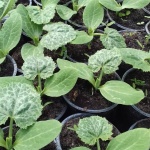

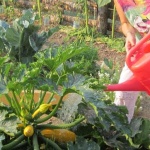
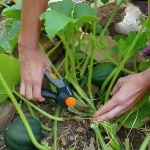
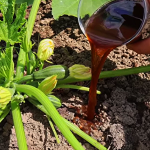
Disease and pest resistance
Most often, fungal infections appear due to the fact that proper care of the culture has not been followed.
Peronosporosis is a common disease of squash. Rounded white spots appear on the leaves. Over time, they can start to darken and take up more space. After the tops begins to crumble, only the cuttings remain. In the fight against fungus, you can use a suspension of "Tsineb" or "Oksikhom".
Anthracnose appears on the aerial parts of the squash. Impressed spots form on the surface of the fruit; they are pale pink in color. Later, yellow-brown spots will be visible on the leaves. The leaf plate will begin to crack, curl and die off. You can fight this with Bordeaux liquid or Hom suspension.
The spider mite sucks the juices out of the bushes. It can be fought with the drug "Iskra", "Confidor" and "Phosbecid".
